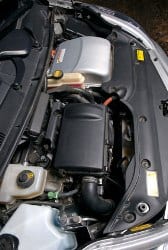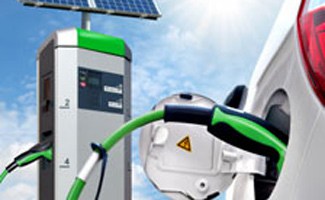How do Hybrid Cars Work?
 The term hybrid is one of the hottest buzz words to enter the English lexicon. In our global economy and an ever-growing awareness of the limitations of our resources, people everywhere are concerned about how we can maintain our lifestyles into the future. There is a plethora of curiosity, enthusiasm and confusion surrounding this term as we face high gas prices and a bleak forecast for our natural environment. Our lifestyles are being threatened, and so people all over the world look to the hybrid car as a potential solution, allowing us to continue speeding across our lands and living our lives of convenience. With all these concerns riding on the success of new technology, it is no wonder that people want to know, in simple terms, how do hybrid cars work.
The term hybrid is one of the hottest buzz words to enter the English lexicon. In our global economy and an ever-growing awareness of the limitations of our resources, people everywhere are concerned about how we can maintain our lifestyles into the future. There is a plethora of curiosity, enthusiasm and confusion surrounding this term as we face high gas prices and a bleak forecast for our natural environment. Our lifestyles are being threatened, and so people all over the world look to the hybrid car as a potential solution, allowing us to continue speeding across our lands and living our lives of convenience. With all these concerns riding on the success of new technology, it is no wonder that people want to know, in simple terms, how do hybrid cars work.
How do hybrid cars work?
This article will explain how hybrid came about and how the different hybrid vehicles work. The basic components of a hybrid car and how these components work together to achieve high performance and fuel efficiency will also be discussed.
What does hybrid mean?
The simplest definition of hybrid is that it is anything that combines two or more different elements to produce a given outcome. In the case of motorized vehicles, a hybrid car is one that utilizes two kinds of propelling energy to produce a vehicle that is competitive with the conventional cars already on the market.
Why are car companies making hybrid cars?
Being able to compete with, and maintain the demands of the market is a key element in the development of hybrid vehicles. Consumers have made their demands clear to the automotive industry: 1) use less natural gas; and 2) maintain the speed and performance we have come to expect from a conventional car. The industry responded with the initiation of hybrid technology.
Hybrid cars use two different motors
 In simple terms, hybrid vehicles are made with two different motors: a petroleum-based combustion motor, and an electric motor. How these two motors work together varies, depending on how much power is produced from which motor. What is most fascinating about this combination of two different sources of energy is that engineers have devised a way for one source of energy to actually feed off the other; the electric power is recharged by the gasoline engine even while driving.
In simple terms, hybrid vehicles are made with two different motors: a petroleum-based combustion motor, and an electric motor. How these two motors work together varies, depending on how much power is produced from which motor. What is most fascinating about this combination of two different sources of energy is that engineers have devised a way for one source of energy to actually feed off the other; the electric power is recharged by the gasoline engine even while driving.
How Hybrid Cars work – the details
Before the specific mechanics of how each of the various types of hybrid cars work, let’s take a look at a simple description of how any vehicle is powered.
Gas vs. electric vs. hybrid powered cars
In order to move, a vehicle needs a transmission. It is the transmission that makes the connection between power and movement; the transmission is what actually turns the wheels.
In a gas-powered car, the energy source is petroleum. Stored in a fuel tank, the petroleum fuels the engine; the engine powers the transmission, and the transmission then turns the wheels.
In an electrically-powered car, the energy source is electricity stored in a battery. The electric energy is sent from the batteries to the motor and on to the transmission, which, of course, turns the wheels.
The main problem with traditional gas-powered cars is that petroleum is a finite resource, one that causes great concern as it pollutes the air and damages other natural resources. As we worry about its availability, the price of gas goes up and consumers buy less, thereby causing havoc on the global economy. The main problem with electric vehicles is low performance compared to conventional cars. Because of the excess of weight of the battery and the electric motor plus the generator and the gasoline engine, the amount of energy required to propel such a heavy vehicle results in more energy use and less efficiency. The electric cars are not able to meet the demands of the market. Consumers are simply not willing to forfeit speed and efficiency for less use of petroleum.
A hybrid car works by utilizing the best of both systems. The auto industry estimates that most drivers only use the maximum horsepower in their vehicle 1% of the time. During the other 99% of driving, energy is wasted in carrying around the extra weight and friction of a larger engine. In a hybrid vehicle, the motor is much smaller (10-20 horsepower). This smaller design provides enough power for the car to run in town and at a cruising highway speed. For extra acceleration then, or for climbing an incline, the gasoline engine kicks in the additional power to compensate. A hybrid vehicle has the combustion motor to meet this need when it arises while the electric motor works to generate the vehicle at lower speeds and when moving in reverse.
Three types of hybrid vehicles
There are three primary types of hybrid vehicles, the parallel hybrid, the mild hybrid and the plug-in hybrid. We compare these types of hybrid vehicles in our article on hybrid vehicle comparisons.



